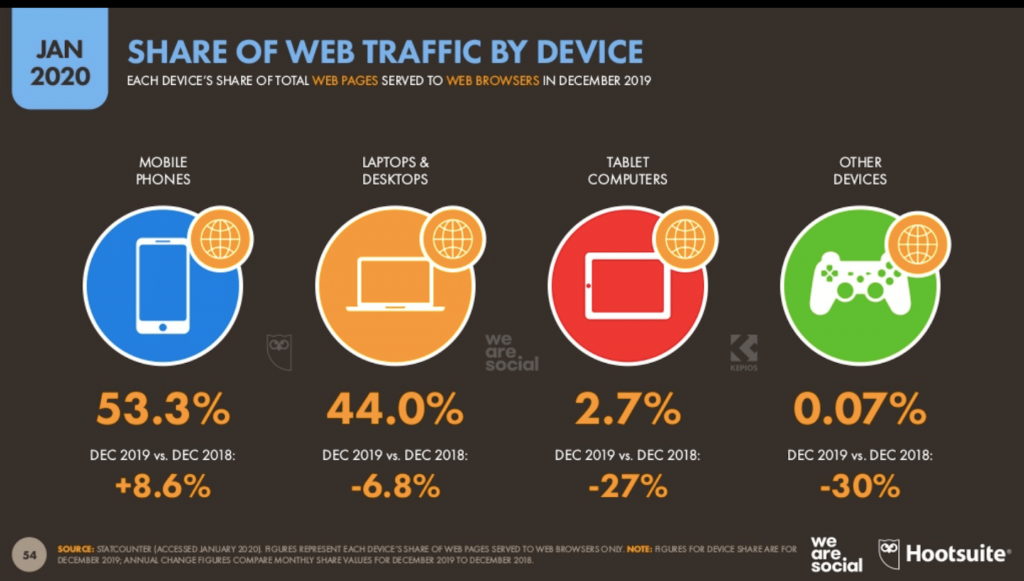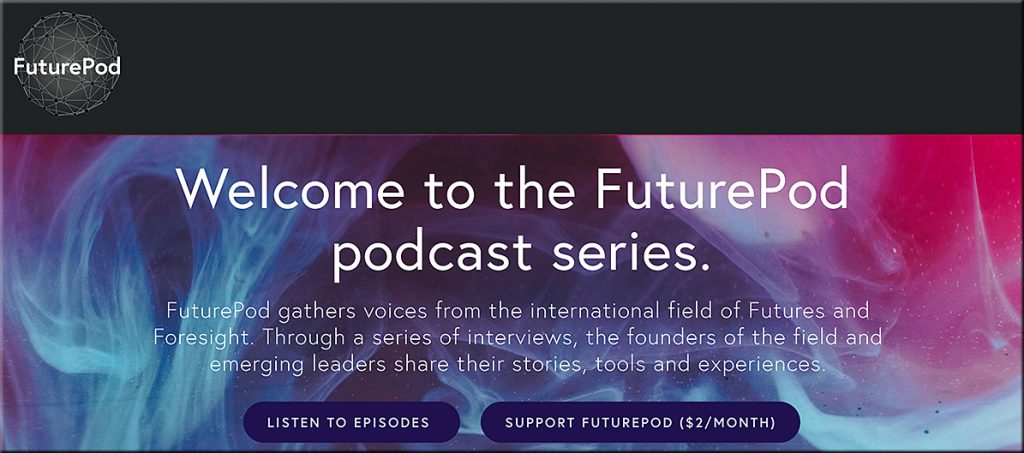The latest research for web designers, February 2020 — from webdesignerdepot.com by Suzanne Scacca
The Internet of Things (IoT) and its impacts on consumer engagement [infographic] — from socialmediatoday.com by AJ Ghergich
Excerpts:
The Internet of Things enables a device to have more intelligence than it would as a stand-alone system.
Internet connectivity provides devices the capacity to share data, in order to power commands and processes that can help improve consumers’ lives.
…
And as this technology becomes more commonplace, the parts comprising such devices will become more financially accessible, algorithms will become more detailed and capable, and the internet of things will become even more powerful. This means the data from social media platforms, as well as from consumers’ daily lives, will be connected, and our devices will continue to make our world more streamlined. And that has significant implications for all sectors.
For a broader overview of the internet of things, and its growing impacts on how we live, check out this infographic from the team at Salesforce.
Gartner: 10 ways technology will change what it means to be human — from campustechnology.com by Rhea Kelly
Excerpts:
Gartner’s top 10 strategic predictions for technology are:
- “By 2023, the number of people with disabilities employed will triple due to AI and emerging technologies, reducing barriers to access.”
- “By 2024, AI identification of emotions will influence more than half of the online advertisements you see.”
- “Through 2023, 30 percent of IT organizations will extend BYOD policies with ‘bring your own enhancement’ (BYOE) to address augmented humans in the workforce.”
- “By 2025, 50 percent of people with a smartphone but without a bank account will use a mobile-accessible cryptocurrency account.”
- “By 2023, a self-regulating association for oversight of AI and machine learning designers will be established in at least four of the G7 countries.”
- “By 2023, 40 percent of professional workers will orchestrate their business application experiences and capabilities like they do their music streaming experience.”
- “By 2023, up to 30 percent of world news and video content will be authenticated as real by blockchain countering deep fake technology.”
- “Through 2021, digital transformation initiatives will take large traditional enterprises on average twice as long and cost twice as much as anticipated.”
- “By 2023, individual activities will be tracked digitally by an ‘Internet of Behavior’ to influence benefit and service eligibility for 40 percent of people worldwide.”
- “By 2024, the World Health Organization will identify online shopping as an addictive disorder, as millions abuse digital commerce and encounter financial stress.”
Facial recognition, location tracking and big data will allow organizations to monitor individual behavior and link that behavior to other digital actions, Gartner said, noting that “The Internet of Things (IoT) – where physical things are directed to do a certain thing based on a set of observed operating parameters relative to a desired set of operating parameters — is now being extended to people, known as the Internet of Behavior (IoB).”
From DSC:
That last quote about the “Internet of Behavior (IoB)” should disturb us. I don’t want that kind of world for the next generation.
Web Technologies of the Year 2019 — from w3techs.com
Excerpts:
These are the technologies that gained most sites in 2019 in areas such as:
- Content Management System of the Year 2019
- Server-side Programming Language of the Year 2019
- JavaScript Library of the Year 2019
- Web Server of the Year 2019
- Operating System of the Year 2019
- Traffic Analysis Tool of the Year 2019
- …and several more categories
Online courts, the future of justice and being bold in 2020 — from abajournal.com by Ari Kaplan
Excerpt:
Ari Kaplan: How do you define online courts?
Richard Susskind: I describe two aspects of online courts in the book. The first is ‘online judging,’ which supports the idea that human judges, not artificial intelligence, should decide cases, not in a physical courtroom or through oral hearings but by the submission of evidence and arguments by the parties online. It is an asynchronous hearing system where the parties pass messages and arguments to the judge remotely and receive responses in kind. I am entirely open to the argument that this is not suitable for all cases, but there are many low-volume matters for which it is simply disproportionate to take the day off work or for lawyers to take up a court’s time to resolve relatively modest difficulties and differences. The second aspect of online courts is, in a way, more controversial. I call it ‘extended courts’ and suggest that it should be part of the court function to provide a range of tools to help the parties understand their rights and obligations. These resources could help them formulate arguments, gather and organize evidence, and provide ways for the parties to resolve disputes with one another similar to online alternative dispute resolution. This combination of judges making decisions online together with an extended court structure will greatly increase access to justice.
Addendum on 1/7/20:
Online Courts and the Future of Justice from State Courts on Vimeo.
Get Smart About Going Online: Choosing the Right Model to Deliver Digital Programming — from evolllution.com by Charles Kilfoye
A veteran online educator looks at the benefits and pitfalls for each of the three main ways to launch an online program.
Excerpt:
Online learning is making headlines again with big players such as University of Massachusetts and California Community College Online launching high profile online initiatives recently. Some would argue that if you haven’t made it in online education already, you’ve missed your opportunity.
However, my sense is it’s never too late. You just have to be smart about it. It all boils down to asking yourself the basic problem-solving questions of Why, What and How to determine if online education is right for your institution. To illustrate my point, I will briefly discuss major considerations you should make when exploring an online strategy and I will examine the pros and cons of the three most common models of delivering online programs in higher education today.
…
Be aware that differentiated pricing may indicate to prospective students that one format is more valuable or better than another. My personal opinion is that a degree earned online should be considered the same degree as one earned on-ground. It is the same program, same faculty, same admissions requirements, same relevance and rigor, so why not the same cost?
From DSC:
Regarding the topic of pricing, it would be my hope that we could offer online-based programs at significantly discounted prices. This is why I think it will be the larger higher education providers that ultimately win out — or a brand new player in the field that uses a next gen learning platform along with a different business model (see below article) — as they can spread their development costs over a great number of students/courses/program offerings.
If the current players in higher ed don’t find a way to do this (and some players have already figured this out and are working on delivering it), powerful alternatives will develop — especially as the public’s perspective on the value of higher education continues to decline.

I’d also like to hear Charles’ thoughts about pricing after reading Brandon’s article below:
- The Biggest Myth About College Has Just Been Busted — from forbes.com by Brandon Busteed
If it’s more expensive, it must be better. That, of course, has been the prevailing wisdom among parents and students when it comes to college. But that wisdom has now been exposed as an utter myth according to a new study published in The Journal of Consumer Affairs. It turns out the cost of a college does not predict higher alumni ratings about the quality of their education. In fact, the opposite is true: total cost of attendance predicts lower ratings.
…
Quality matters. Price does not. Quality and price are not the same things. And this all has enormous implications for the industry and its consumers.
FuturePod gathers voices from the international field of Futures and Foresight. Through a series of podcast interviews, the founders of the field and emerging leaders share their stories, tools and experiences. The Futures and Foresight community comprises a remarkable and diverse group of individuals who span, academic, commercial and social interests.














